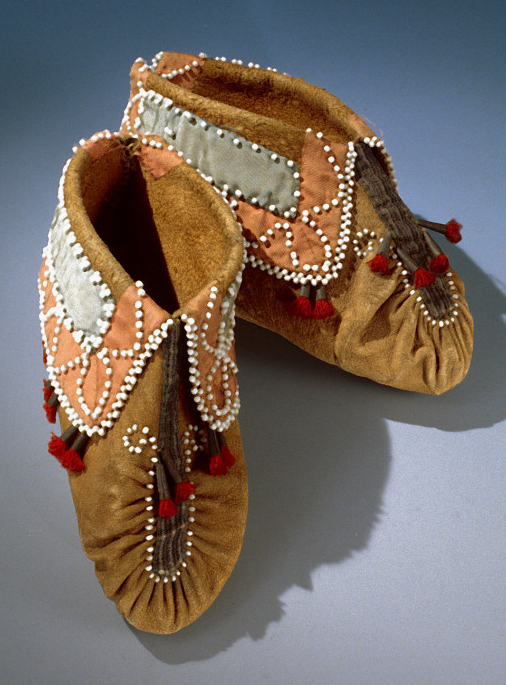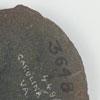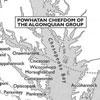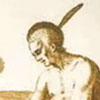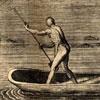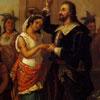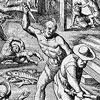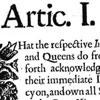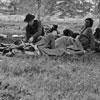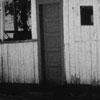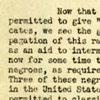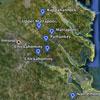Made of deerskin and decorated with silk, glass beads, and metal, these moccasins date from the mid- to late-18th century. This style of shoe, though not always as extensively decorated, was common among Virginia Indian groups. As you examine this photograph, consider what these moccasins reveal about the everyday life of Virginia Indians.
Shoes are everyday objects, useful for warming or protecting one’s feet. It may seem that they are unlikely to tell us much about the past, especially when compared to objects such as Chief Powhatan’s mantle or official treaties. But when we think historically and ask careful questions about them, we can actually learn a great deal about the people who made and used these shoes.
Historical objects, like documents, tell their own stories. They served to connect people and places and they represent ways of life as well as historical change. These moccasins, for example, speak not only to the importance of deer in Virginia Indian cultures, but also to cultural practices, art, and craftsmanship. These moccasins in particular are also revealing of the importance of trade to Virginia Indians and the incorporation of European trade goods – silk, glass, and metal – into everyday life.
Keep these moccasins in mind as you examine the material culture, images, and documents that reveal more about Virginia Indians from the late woodland period through today.
Source: <a href="http://www.ouramericanrevolution.org/index.cfm/object/view/ob0253" target="_blank">“Indian Moccasin,”</a> still image, 1750-1780, in <em>The American Revolution</em>, Colonial Williamsburg, accessed July 28, 2011.
Instructions
Explore the following resources to learn more about Native Peoples and the moccasins. Click on an image thumbnail to load it in the main area.
After viewing all the resources, continue to the Rethink.


